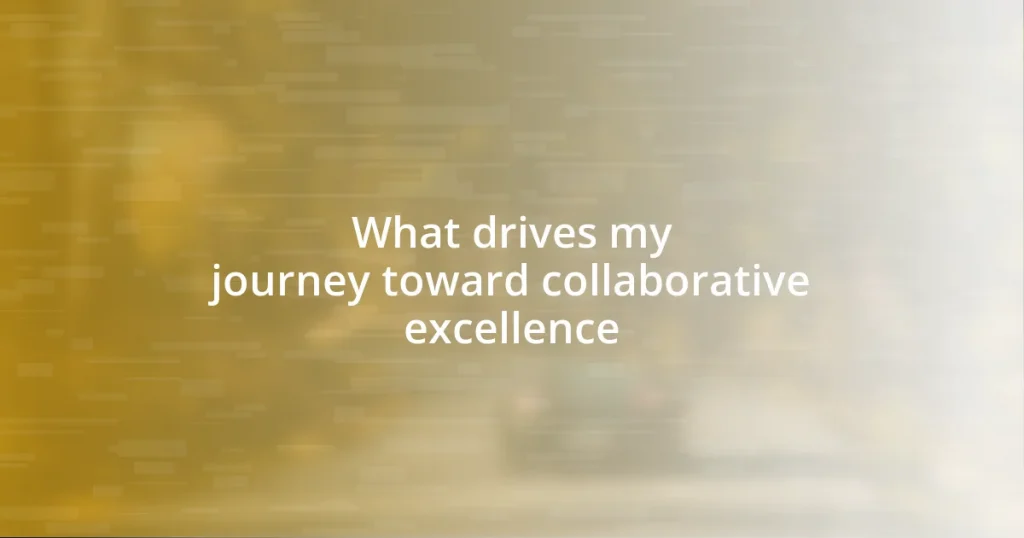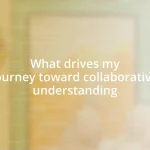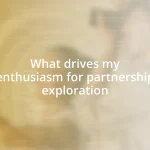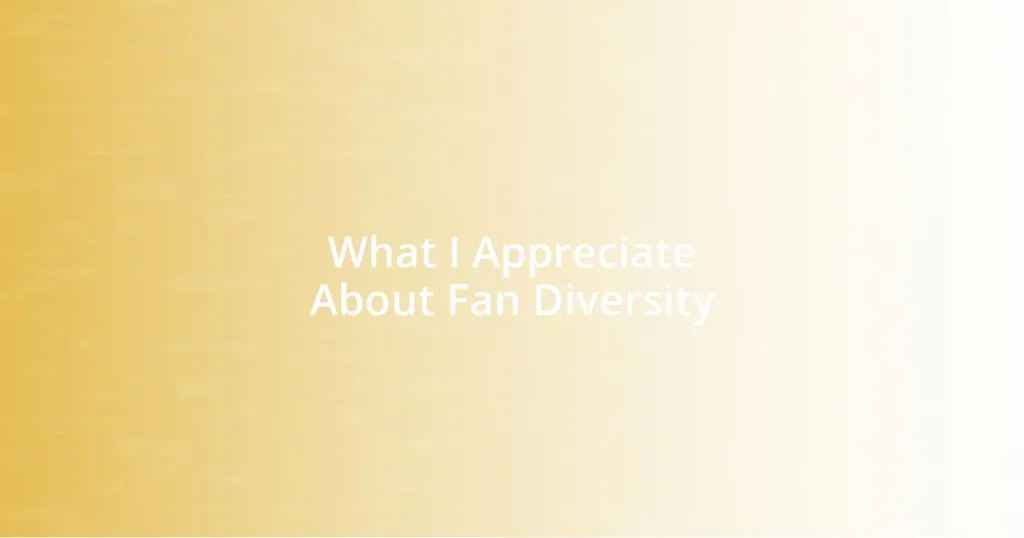Key takeaways:
- Trust and open communication are essential to fostering collaborative excellence and encouraging creativity among team members.
- Key motivators for collaboration include connection, recognition, and continuous learning, which drive individuals to actively engage and contribute.
- Sustaining long-term partnerships requires ongoing effort, honest conversations about challenges, and celebrating shared achievements to reinforce commitment.
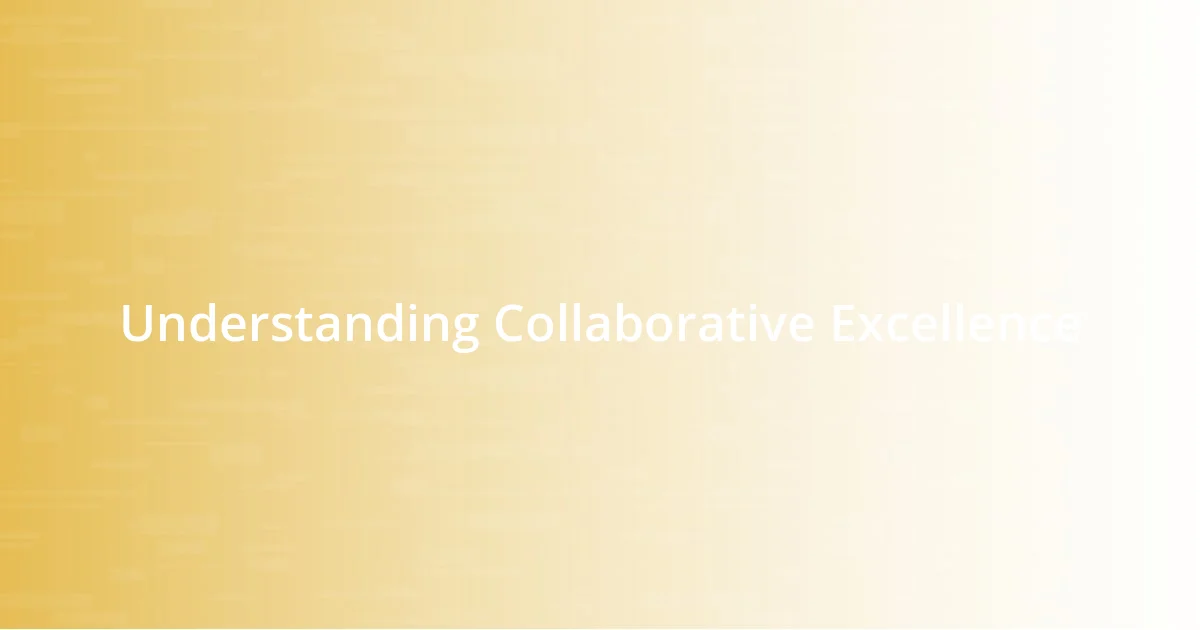
Understanding Collaborative Excellence
Collaborative excellence isn’t just about working together; it’s about creating a synergy that propels everyone forward. I vividly remember a project where our diverse skills fused into something greater than individual efforts. We weren’t just colleagues; we became co-creators, and the thrill of brainstorming together was palpable.
In my experience, trust plays a pivotal role in achieving this excellence. Think about it: how can you innovate if your team isn’t comfortable sharing their ideas? I’ve seen teams flourish when there’s an open environment, where vulnerability is seen as strength. This dynamic encourages creativity, allowing for richer discussions and breakthroughs that might have otherwise been stifled.
Another layer to consider is the importance of shared goals. I often reflect on how aligned visions can transform a group. When everyone is pulling in the same direction, it feels like magic in motion. Have you ever felt this kind of energy? That collective momentum can truly drive success and satisfaction, turning projects into shared triumphs.
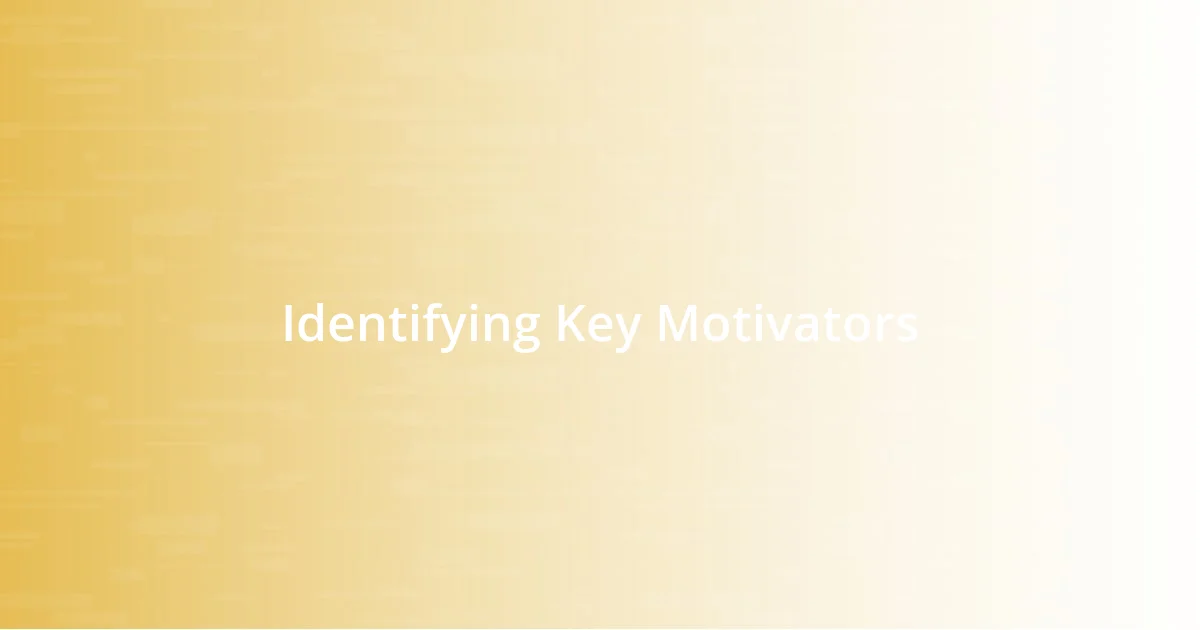
Identifying Key Motivators
Identifying what drives my journey toward collaborative excellence starts with understanding my inner motivations. For instance, I am fueled by the desire for connection and the joy of seeing collective ideas materialize into something impactful. There was a time when we tackled a challenging initiative, and I felt an overwhelming sense of fulfillment when each team member proudly contributed their unique perspective. It’s those moments of shared commitment that really light a fire in me.
In addition to connection, recognition plays a significant role in my motivation. I have always appreciated when our efforts are acknowledged, not just by leaders but by peers as well. I remember a brainstorming session where one of my ideas sparked newfound inspiration in a teammate. His enthusiastic feedback not only validated my contribution but also made me feel like an integral part of our collaborative success. This encourages me to keep investing in shared goals, as I savor that feeling of being part of something larger than myself.
Lastly, the challenge of continuous learning serves as a core motivator. Each collaboration presents an opportunity to grow, adapt, and refine my skills. Participating in a workshop together once transformed my approach, as I learned from fellow team members. Their diverse experiences enriched my understanding and reshaped my perspective, making me eager to embark on the next collaborative journey with fresh eyes. This interplay of growth, recognition, and connection forms the essence of what drives me forward.
| Key Motivators | Explanation |
|---|---|
| Connection | The joy of shared contributions and collective achievements |
| Recognition | Acknowledgment from peers fosters a sense of belonging |
| Continuous Learning | Collaboration provides opportunities for growth and skill refinement |
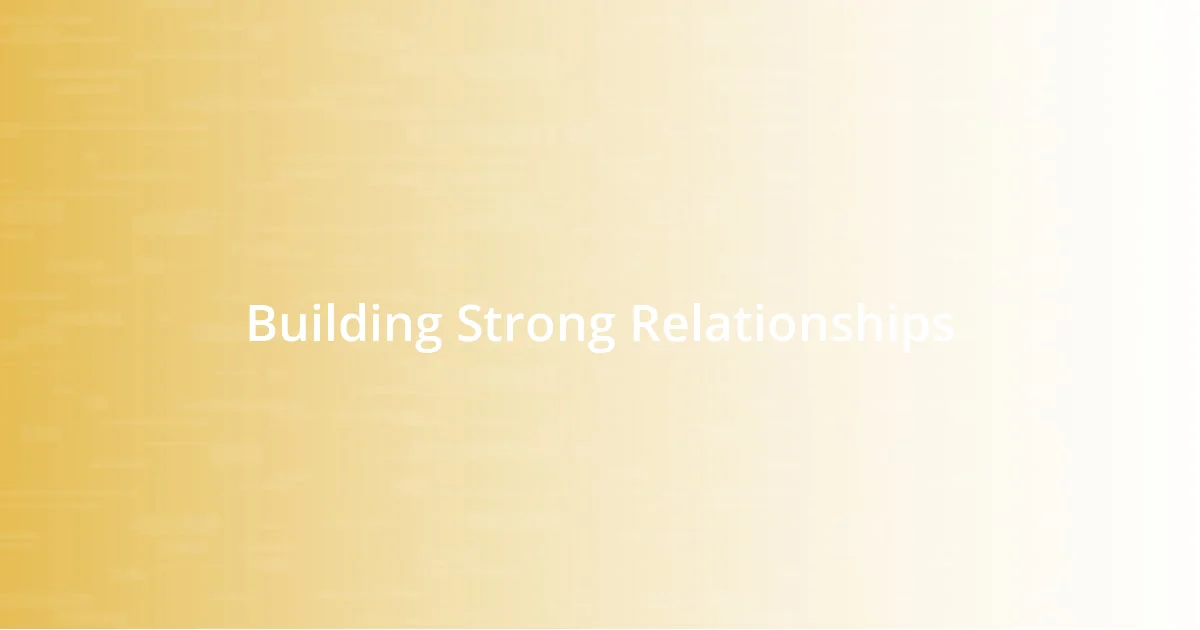
Building Strong Relationships
Building strong relationships is fundamental to any collaborative effort. I remember a time when a team of us was facing a tight deadline. Instead of merely focusing on tasks, we took a moment to connect personally and share our stories. This simple act created an immediate bond, transforming us from a group of individuals into a supportive unit. I genuinely believe that when you invest in knowing your teammates, you cultivate a sense of belonging that drives everyone to communicate openly and engage wholeheartedly.
To truly foster these connections, I’ve found a few key practices work wonders:
- Active Listening: Taking the time to genuinely hear others fosters understanding and respect.
- Consistent Communication: Regular check-ins keep everyone on the same page and help address issues promptly.
- Shared Experiences: Engaging in team-building activities outside of work strengthens interpersonal ties and builds trust.
- Expressing Gratitude: Recognizing each person’s contributions promotes a positive atmosphere and encourages continued collaboration.
Every small effort adds up. I’ve seen firsthand how these practices can transform a work dynamic, creating an environment where ideas and creativity flourish.
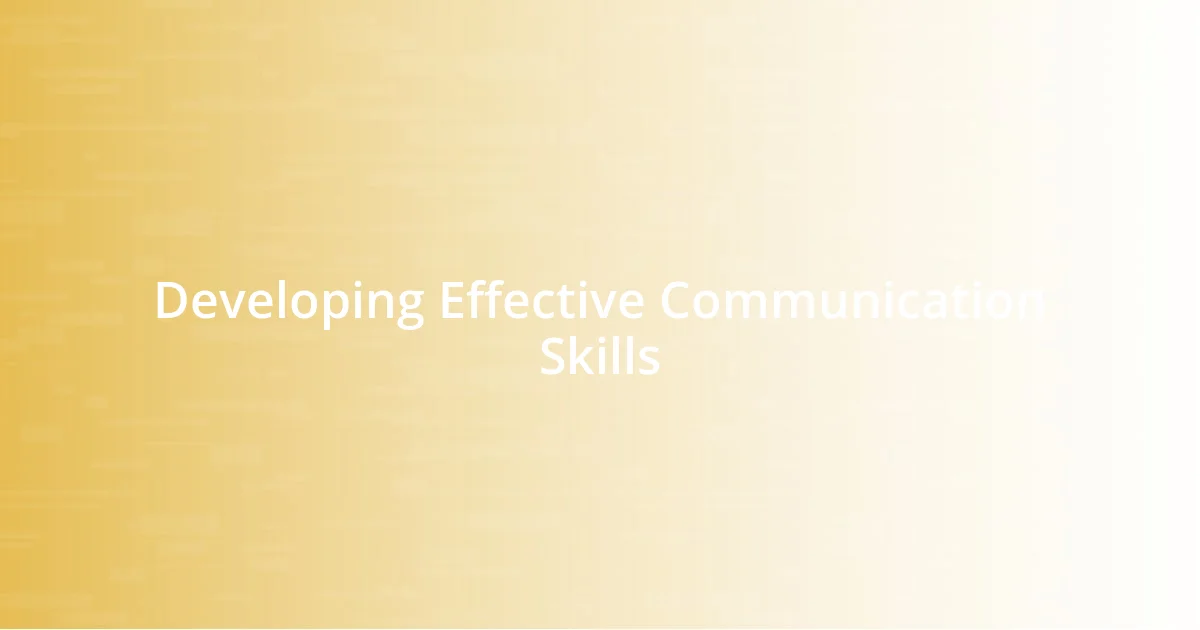
Developing Effective Communication Skills
Effective communication skills are the backbone of collaboration. I recall a meeting where misunderstandings were spiraling out of control, causing frustration among team members. Suddenly, I decided to pause the conversation and invite everyone to share their viewpoints—one by one. It was incredible to witness how, with each voice heard, the tension dissipated, ultimately leading us to a clearer and more unified direction. Isn’t it fascinating how just creating space for dialogue can transform a chaotic situation?
One aspect of communication that I’ve learned to value greatly is the power of clarity. In my early experiences, I would often use jargon or complex explanations, thinking it would showcase my knowledge. However, I quickly realized that clarity fosters stronger connections. Now, I aim to break down my ideas into simple terms, ensuring everyone grasps the message. After all, wouldn’t we all prefer a straightforward conversation over deciphering a riddle?
Moreover, non-verbal communication plays a significant role in how I connect with others. I remember attending a workshop where the facilitator emphasized body language. By simply facing someone while they spoke or nodding in agreement, I noticed how it encouraged openness and trust. This awareness has helped me become more attuned to the feelings of my colleagues. Have you ever considered how a simple gesture can say so much more than words?
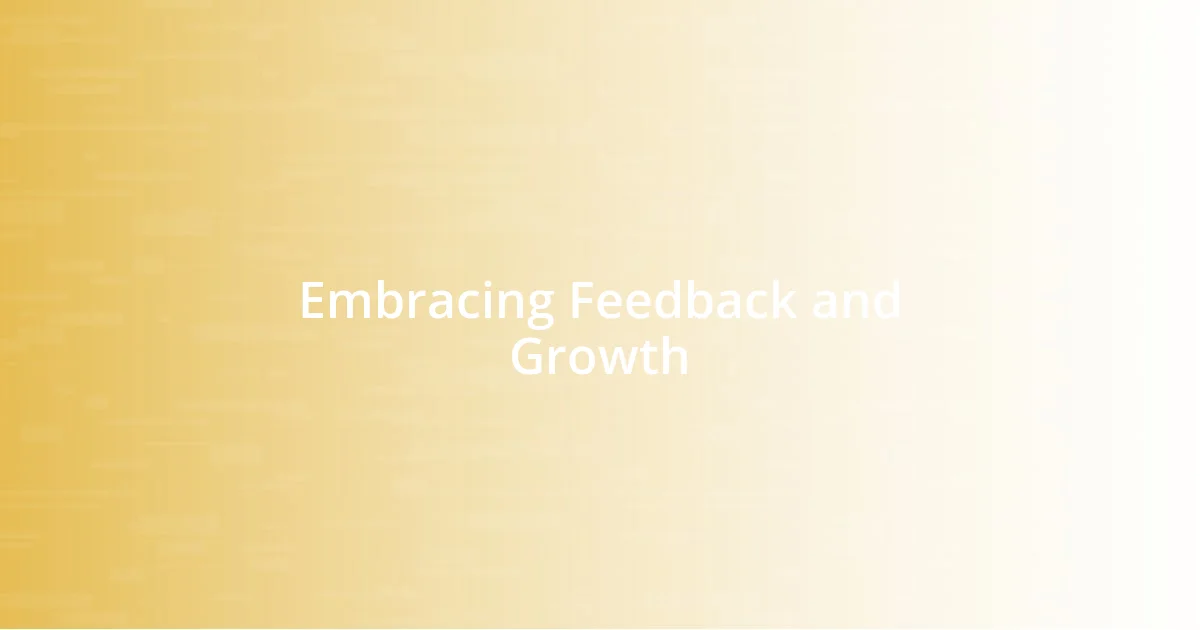
Embracing Feedback and Growth
Embracing feedback has been one of the most transformative aspects of my journey toward collaborative excellence. I vividly recall a time when I received constructive criticism on my presentation style. Initially, my instinct was to defend my approach, but I took a deep breath and listened. That moment of vulnerability not only helped me refine my delivery but also opened the door to deeper conversations with my team. Isn’t it intriguing how feedback, uncomfortable as it may seem, can be the key to unlocking our potential?
Growth thrives in an environment where feedback is not just welcomed but actively sought. I remember creating a “feedback circle” in our team meetings, where we dedicated time for each member to share insights about one another’s contributions. The first few sessions felt awkward, but over time, that space became our trusted haven for collaboration. Have you ever created a space like that? It was rewarding to witness how honesty fostered accountability and motivated us to elevate our work. Each shared perspective became a stepping stone in our collective growth.
I’ve learned to view feedback as an opportunity rather than a criticism. It’s like polishing a rough stone—you may not see the shine immediately, but with patience and care, it reveals its brilliance. One evening, during a coffee break with a colleague, I expressed my concerns about a project. To my surprise, they offered an idea that completely reshaped my vision. This experience solidified my belief that when we embrace feedback, we not only nurture our growth but also empower those around us. Isn’t it incredible how collaboration can lead to breakthroughs we couldn’t achieve alone?
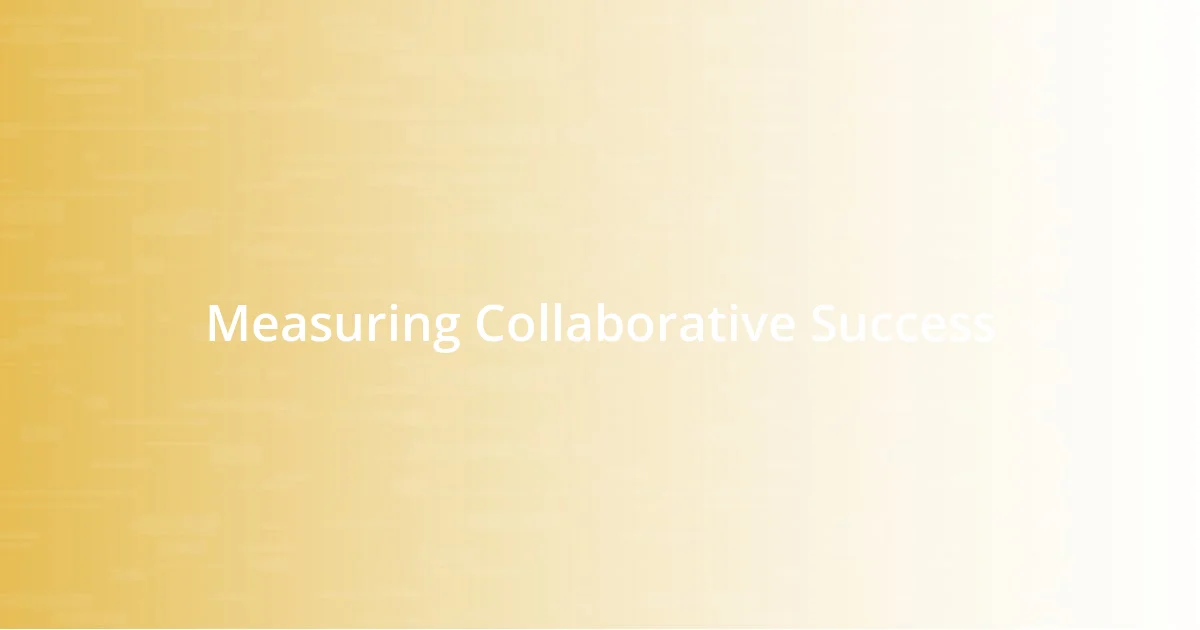
Measuring Collaborative Success
Measuring collaborative success can seem elusive at first, but I’ve found that clear metrics make all the difference. In one of my teams, we started tracking our project milestones alongside team satisfaction levels. This dual approach provided not only quantifiable results but also kept us attuned to how each member felt about their contributions. Isn’t it interesting how numbers can tell one story while emotions reveal another?
One key metric I’ve come to value is the quality of our interactions. I remember a project where we recorded feedback after each meeting, focusing on how participants felt about their engagement. Surprisingly, even when our outcomes weren’t perfect, the high satisfaction scores highlighted how valued everyone felt. It reminded me that successful collaboration isn’t just about results; it’s also about fostering an environment where people feel they belong. Have you considered how emotional metrics could redefine your understanding of success?
Moreover, the consistency of our collaborative efforts speaks volumes. During a long-term initiative, we set aside time for regular reflection sessions. These informal gatherings allowed us to assess both our progress and our dynamics. I vividly recall a moment where we celebrated a small victory, but it was during the discussions around our challenges that the real insights emerged. Don’t we often forget that underlying struggles can illuminate pathways to success? This experience reinforced my belief that measuring collaborative success is about harnessing both achievements and the journey we take together.
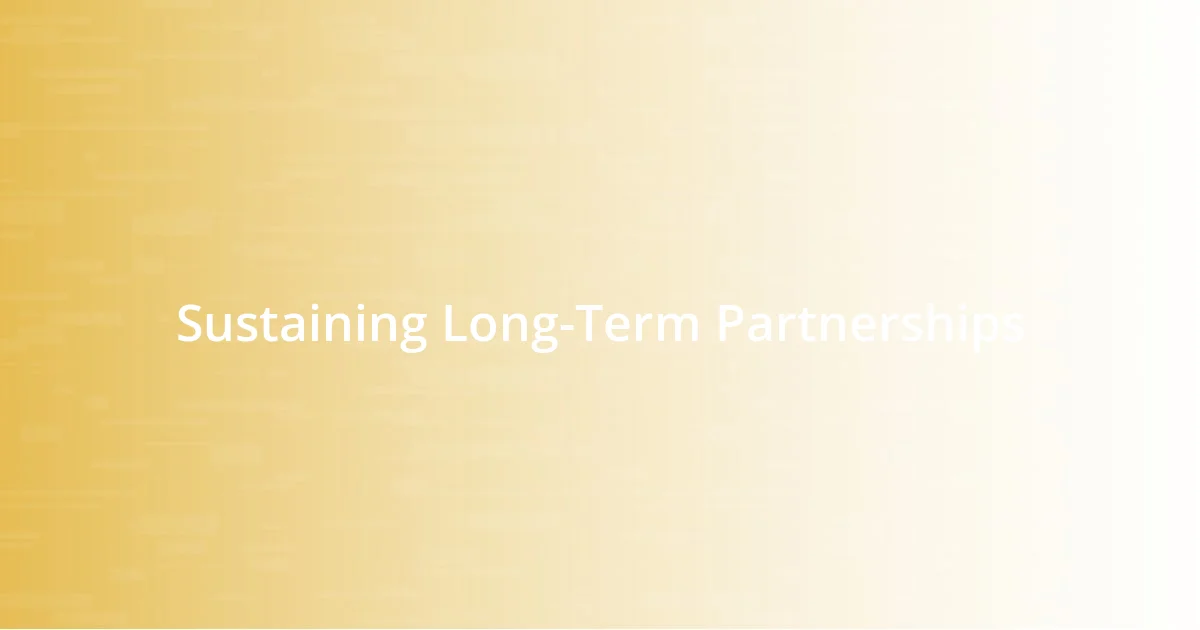
Sustaining Long-Term Partnerships
Sustaining long-term partnerships is an art that requires ongoing effort. I recall a project where my team partnered with a local nonprofit. We started strong, but as the months passed, enthusiasm waned. To reignite our collaboration, I reached out for a casual lunch with the nonprofit leaders. This simple gesture transformed our relationship; we talked openly about our needs and challenges. Have you ever noticed how a shared meal can disarm tension and remind us of our common goals?
Trust is a cornerstone of lasting partnerships, and I learned this firsthand when a mistake strained our collaboration with a supplier. Instead of sweeping the issue under the rug, I took the initiative to have an honest conversation. It felt uncomfortable, yet that vulnerability deepened our trust and led us to create a clearer communication plan. I often think about how facing challenges head-on can actually strengthen the bonds we have. Have you ever turned a tricky situation into a stepping stone for growth in your partnerships?
I’ve also come to appreciate the importance of celebrating milestones together. One time, our team and a partner organization reached a critical deadline, and we decided to host a small celebration. We invited everyone involved and took a moment to reflect on our journey. The laughter and shared joy created a sense of belonging and reinforced our commitment to one another. I believe that these shared experiences not only create fond memories but also lay the groundwork for resilience. Isn’t it empowering to think that joy can sustain us through tough times?










